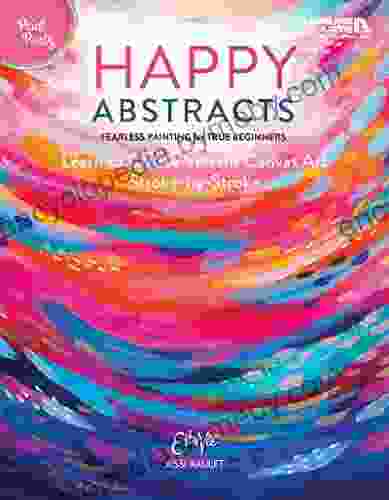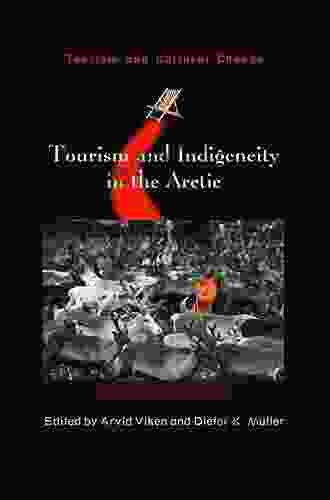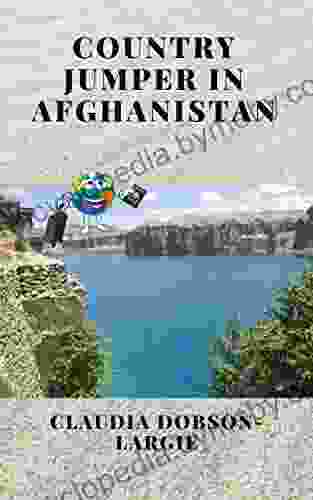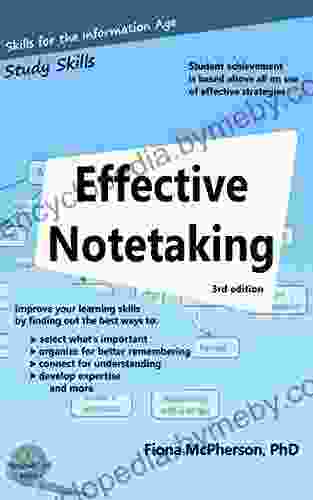Tourism and Indigeneity in the Arctic: A Journey through Cultural Change

**
**
5 out of 5
| Language | : | English |
| File size | : | 2872 KB |
| Text-to-Speech | : | Enabled |
| Screen Reader | : | Supported |
| Enhanced typesetting | : | Enabled |
| Word Wise | : | Enabled |
| Print length | : | 459 pages |
**
The Arctic region, with its pristine landscapes, vibrant indigenous cultures, and unique ecosystems, attracts a growing number of tourists. While tourism has the potential to bring economic benefits and promote cultural exchange, it also poses challenges for indigenous communities seeking to preserve their traditions and protect their fragile environments. This article explores the complex relationship between tourism and indigeneity in the Arctic, examining its impact on cultural preservation, sustainability, and the well-being of indigenous peoples.
Cultural Preservation: Balancing Authenticity and Accessibility
Tourism can provide indigenous communities with a platform to showcase their rich cultures and traditions. However, the commodification of cultural practices can lead to the loss of authenticity and the erosion of traditional values. Indigenous communities face the delicate task of balancing the desire to share their heritage with visitors while ensuring its integrity.
Some Arctic communities have successfully implemented tourism practices that respect and preserve their cultures. For example, the Inuit of Nunavut, Canada, have established cultural tourism initiatives that focus on sharing traditional knowledge, language, and arts with visitors. By controlling the narrative and ensuring that tourism activities align with community values, indigenous communities can promote cultural preservation while generating income.
Sustainability: Mitigating the Impact on Fragile Environments
The Arctic's pristine ecosystems are highly sensitive to human activity. Mass tourism can lead to pollution, waste accumulation, and the disturbance of wildlife and habitats. Indigenous communities have a vested interest in protecting their traditional lands and livelihoods, which rely heavily on the health of the environment.
Sustainable tourism practices that prioritize environmental protection are essential in the Arctic. This includes limiting visitor numbers, using eco-friendly transportation, and educating tourists about the importance of conservation. Indigenous knowledge and traditional resource management practices can also contribute to the development of sustainable tourism models that respect Arctic ecosystems.
Social Impact: Empowering Indigenous Communities
Tourism can bring economic benefits to indigenous communities, providing employment and generating revenue. However, it is crucial that tourism development is carried out in a way that respects indigenous rights and empowers local populations.
Indigenous participation in tourism planning and decision-making is essential to ensure that tourism benefits the community as a whole. This includes establishing partnerships with indigenous-owned businesses, providing training and capacity-building opportunities, and ensuring that tourism activities align with community development goals.
Well-being: Balancing Tourism Benefits and Social Challenges
While tourism can offer economic opportunities, it can also create social challenges for indigenous communities. The influx of tourists can lead to cultural disruption, increased competition for resources, and the displacement of traditional livelihoods.
It is important to address these challenges through community-based tourism initiatives that involve indigenous peoples at all levels of planning and operation. By controlling the terms and conditions of tourism development, indigenous communities can minimize negative social impacts and maximize the benefits for their well-being.
The relationship between tourism and indigeneity in the Arctic is complex and multifaceted. While tourism can bring economic benefits and promote cultural exchange, it also poses challenges for indigenous communities seeking to preserve their traditions and protect their fragile environments.
By balancing cultural preservation, sustainability, social impact, and well-being, indigenous communities can navigate the challenges of tourism and harness its potential for economic development and cultural revitalization. Sustainable tourism practices, indigenous participation, and community-based initiatives are essential for creating a future where tourism benefits both indigenous peoples and the Arctic environment.
References
- Arctic Council (2019). Sustainable Tourism in the Arctic. [PDF]
- Gearheard, S., Aporta, C., & Oskal, N. (2017). The impacts of tourism on Arctic communities: A review and case study from Svalbard, Norway. Polar Geography, 40(2),137-159.
- Lemelin, R. H., & Johnston, M. E. (2018). Tourism and the Sustainable Development Goals: The curious case of the Arctic. Tourism and Hospitality Research, 18(1),3-20.
- Natcher, D. C., & Polster, D. F. (2016). Community-based Tourism, Identity, and Empowerment in the Canadian Arctic. Arctic, 69(3),207-220.
****
5 out of 5
| Language | : | English |
| File size | : | 2872 KB |
| Text-to-Speech | : | Enabled |
| Screen Reader | : | Supported |
| Enhanced typesetting | : | Enabled |
| Word Wise | : | Enabled |
| Print length | : | 459 pages |
Do you want to contribute by writing guest posts on this blog?
Please contact us and send us a resume of previous articles that you have written.
 Book
Book Novel
Novel Page
Page Chapter
Chapter Text
Text Story
Story Genre
Genre Reader
Reader Library
Library Paperback
Paperback E-book
E-book Magazine
Magazine Newspaper
Newspaper Paragraph
Paragraph Sentence
Sentence Bookmark
Bookmark Shelf
Shelf Glossary
Glossary Bibliography
Bibliography Foreword
Foreword Preface
Preface Synopsis
Synopsis Annotation
Annotation Footnote
Footnote Manuscript
Manuscript Scroll
Scroll Codex
Codex Tome
Tome Bestseller
Bestseller Classics
Classics Library card
Library card Narrative
Narrative Biography
Biography Autobiography
Autobiography Memoir
Memoir Reference
Reference Encyclopedia
Encyclopedia Ada Hoffmann
Ada Hoffmann Aaron Sanchez
Aaron Sanchez 1st Edition Kindle Edition
1st Edition Kindle Edition 7th Edition Kindle Edition
7th Edition Kindle Edition Karen Tei Yamashita
Karen Tei Yamashita A Hauser
A Hauser Mary Helen Bowers
Mary Helen Bowers Bayard Taylor
Bayard Taylor Kristin Beale
Kristin Beale Monica Beyer
Monica Beyer Actus
Actus Sanja Kulenovic
Sanja Kulenovic Frank C Hawkins
Frank C Hawkins A J Mackenzie
A J Mackenzie Elizabeth Gardner
Elizabeth Gardner H Perry Horton
H Perry Horton Adam Levinter
Adam Levinter Mike Lyon
Mike Lyon Mark Strom
Mark Strom Jane Yolen
Jane Yolen
Light bulbAdvertise smarter! Our strategic ad space ensures maximum exposure. Reserve your spot today!

 Boris PasternakFour Decades Of Boston Red Sox Photography: An Immersive Journey Through...
Boris PasternakFour Decades Of Boston Red Sox Photography: An Immersive Journey Through... Glenn HayesFollow ·16.6k
Glenn HayesFollow ·16.6k Howard BlairFollow ·19k
Howard BlairFollow ·19k Mark MitchellFollow ·5.3k
Mark MitchellFollow ·5.3k Marvin HayesFollow ·17.5k
Marvin HayesFollow ·17.5k Benjamin StoneFollow ·17.9k
Benjamin StoneFollow ·17.9k Hassan CoxFollow ·12.8k
Hassan CoxFollow ·12.8k Milan KunderaFollow ·16.8k
Milan KunderaFollow ·16.8k J.D. SalingerFollow ·3.2k
J.D. SalingerFollow ·3.2k

 Timothy Ward
Timothy WardFearless Painting for True Beginners: Learn to Create...
Unlock the Joy of...

 Fernando Pessoa
Fernando PessoaProven 12-Step Program for Financial Peace of Mind:...
Are you struggling with...

 Chinua Achebe
Chinua AchebeLayers Colors Desire: Layers Colors Thoughts Mystery
A Literary Labyrinth...

 Fernando Bell
Fernando BellUnearth Hidden Treasures: Journey Through "Secondhand...
Prepare to embark on an extraordinary...

 Caleb Carter
Caleb CarterSymbolic Messages Garage Sale Mysteries: Unveiling the...
Welcome to the extraordinary world of the...

 Nikolai Gogol
Nikolai GogolTravels in the Billion Dollar Trash Trade: Uncovering the...
Ỡ In his...
5 out of 5
| Language | : | English |
| File size | : | 2872 KB |
| Text-to-Speech | : | Enabled |
| Screen Reader | : | Supported |
| Enhanced typesetting | : | Enabled |
| Word Wise | : | Enabled |
| Print length | : | 459 pages |










